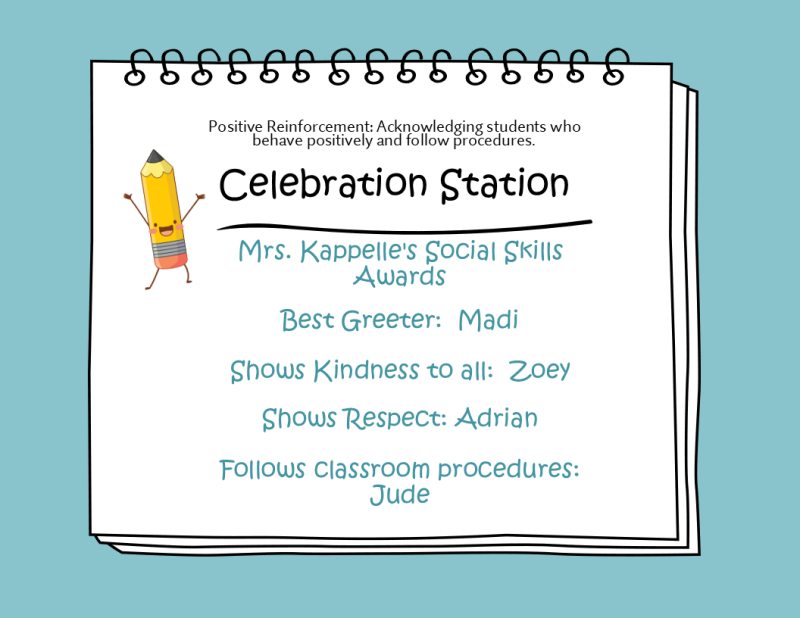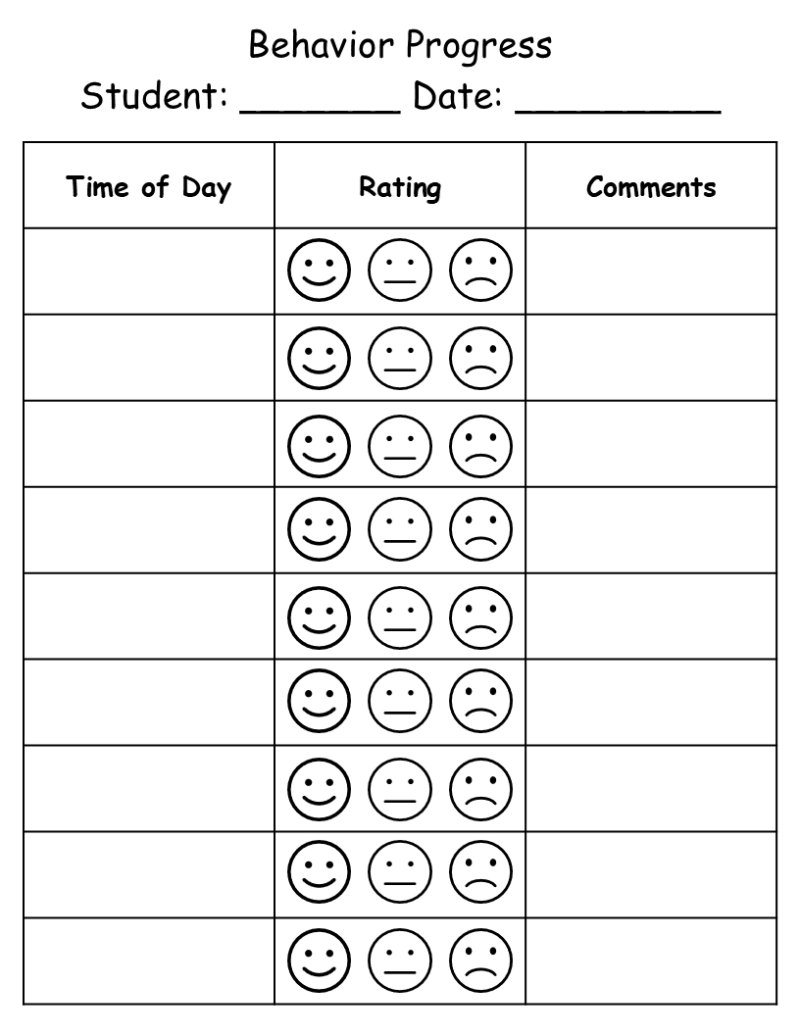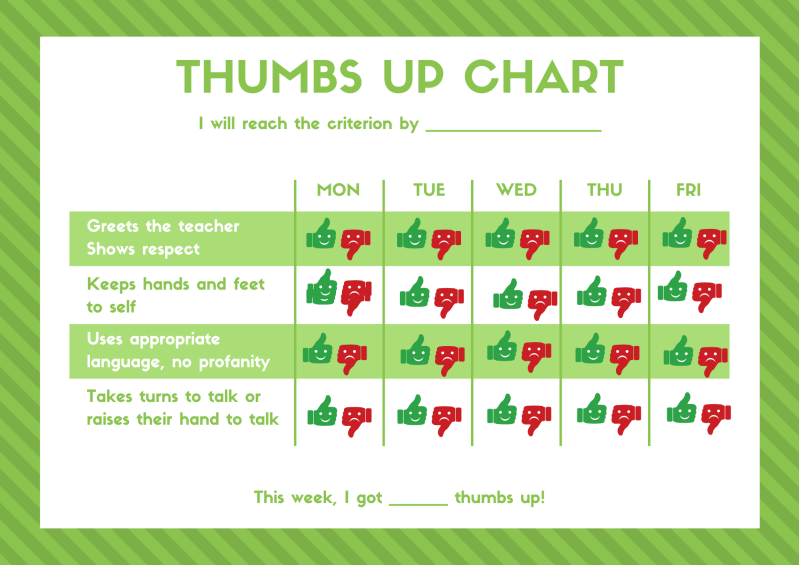

PBIS is based on school staff using a proactive and preventive approach to discipline while meeting student's needs, and reinforcing prosocial behavior by using evidence-based practices and data to make decisions (Harlacher, 2018).

The above Behavior Progress Report can be used with Check-in Check-out. Each teacher gives a rating of how the student did in their class and feedback comments. At the end of the day the student brings it to the check-out and receives feedback from the primary teacher before taking it home.
The Thumbs UP Chart can be used to collect data on a behavior contract. Each teacher will have a chart for the week. At the end of the week the team leader will collect them and analysis the data before discussing it with the student and parents.
A Behavior Data Chart can be used by teachers and paraprofessionals to track behavior, make decisions on delivery of strategy, monitor progress, and be a visual feedback for the team, parents, and student.
SOONER HS HAS G.R.I.T.......GOALS.....RESPECT.....INTEGRITY.....TEAMWORK.....
MRS. KAPPELLE'S CLASSROOM INCENTIVE: WILL BE AWARDED TO STUDENTS WHO DEMONSTRATE POSITIVE BEHAVIOR BY FOLLOWING RULES & PROCEDURES
ATTENDANCE/ TARDY/ DETENTION INCENTIVES FOR POSITIVE BEHAVIOR
PICK ONE:
1. YOU MAY HAVE AN HOUR OF “SEAT TIME” ADDED TO YOUR TOTAL TIME FOR FREE
2. YOU MAY BE EXCUSED FOR 1 TARDY
3. YOU MAY RECEIVE 1 EXCUSAL FROM LUNCH DETENTION
STUDENT NAME:_____________________________________________
TEACHER SIGNATURE:________________________________________
DATE:_____________________________________________________
REASON:________________________________________________
EXPECTED STUDENT BEHAVIOR POSTERS FOR MRS. KAPPELLE'S CLASSROOM

STUDENT BEHAVIOR EXPECTATIONS FOR THE CLASSROOM



